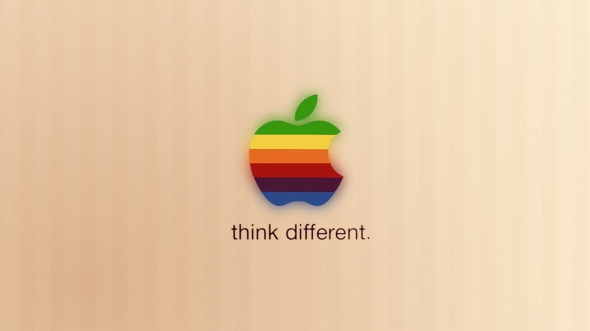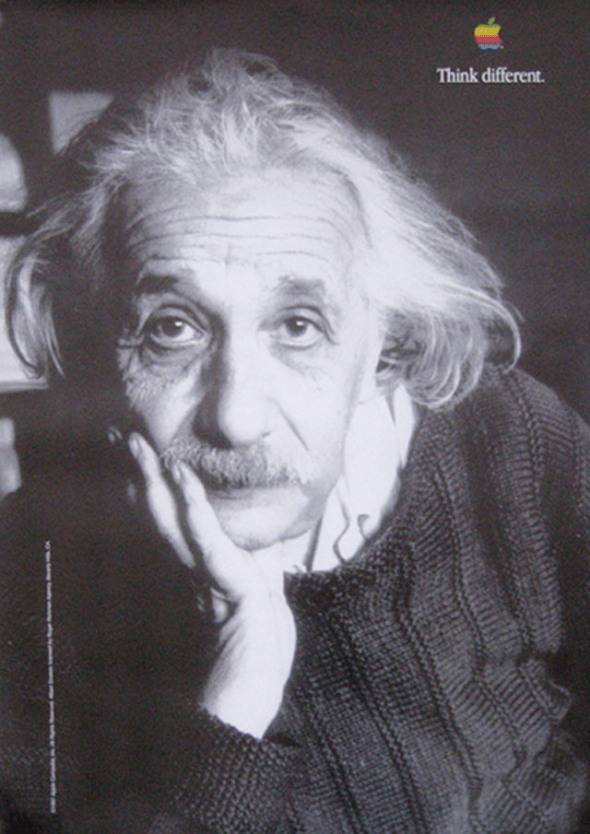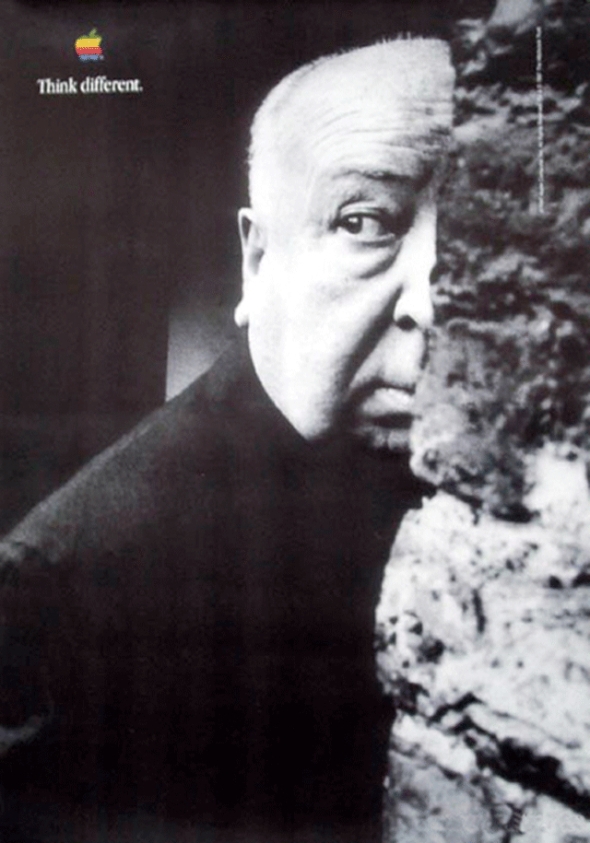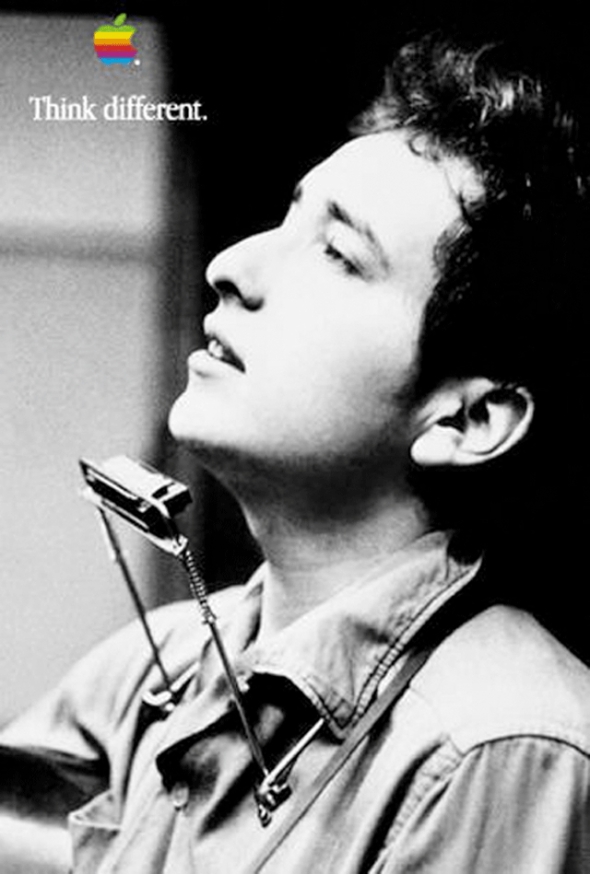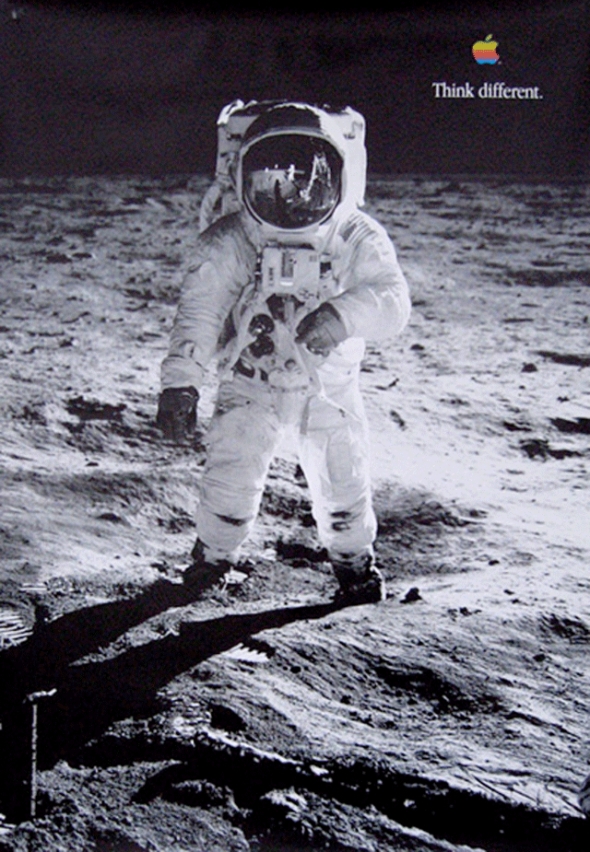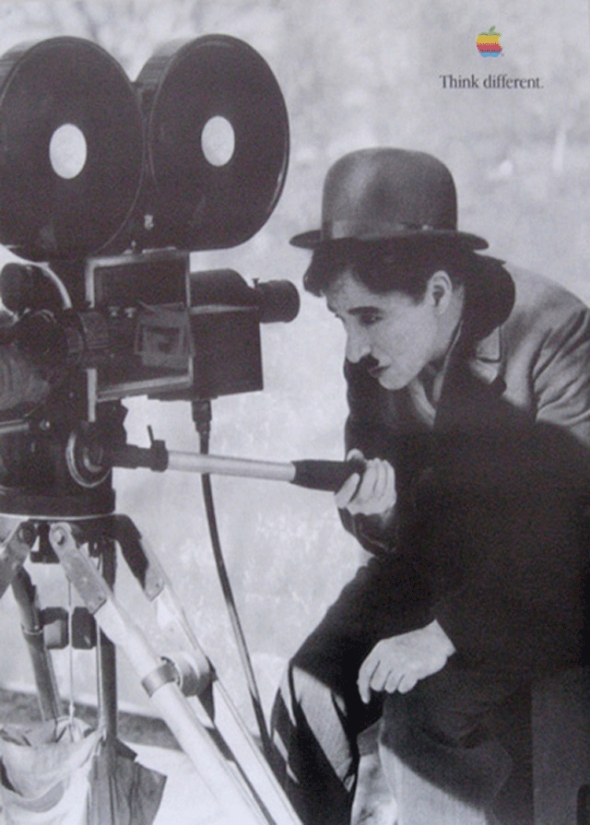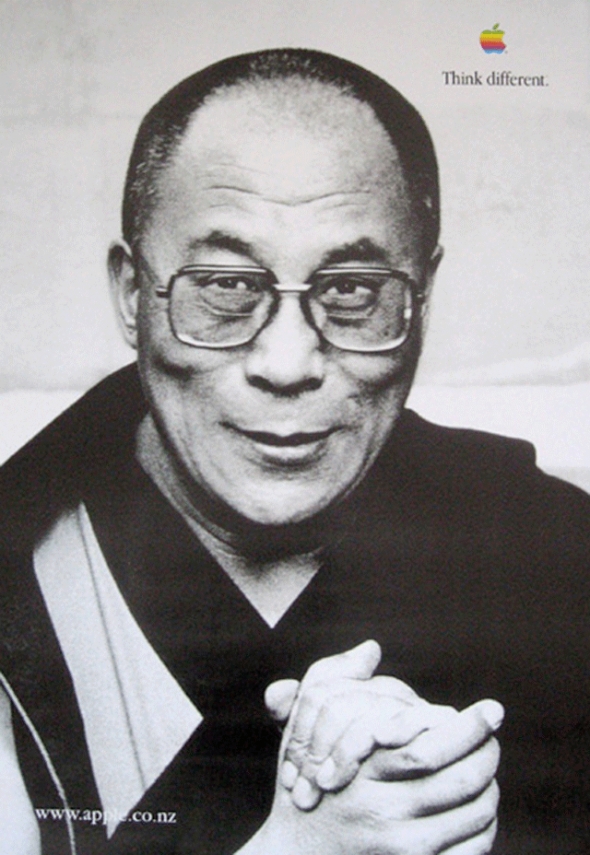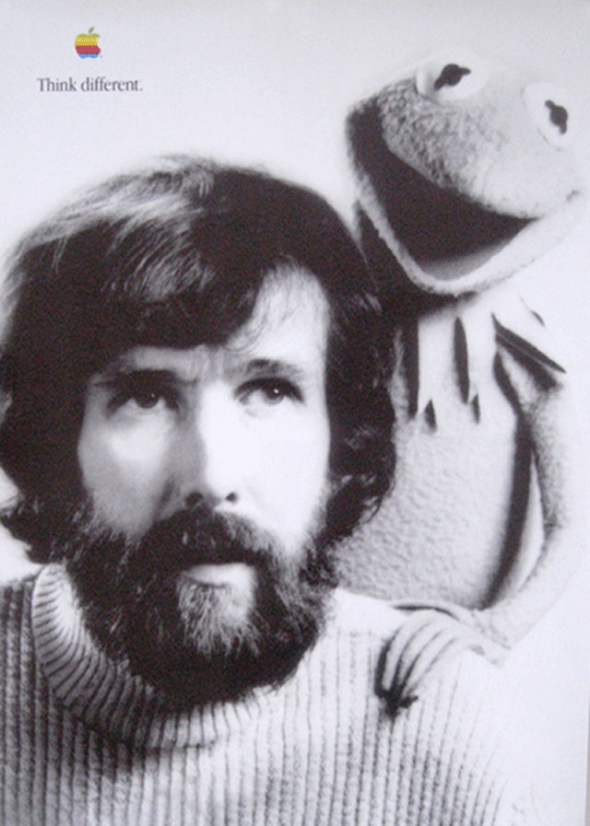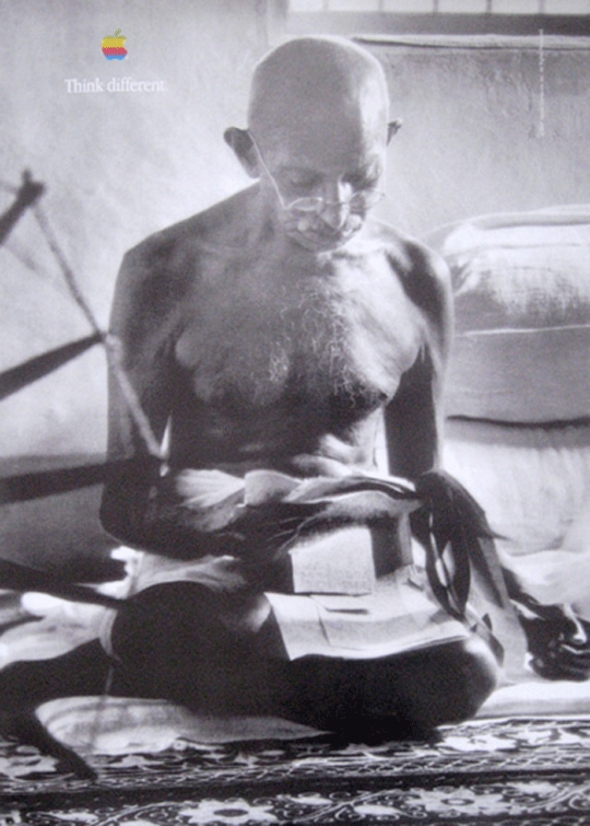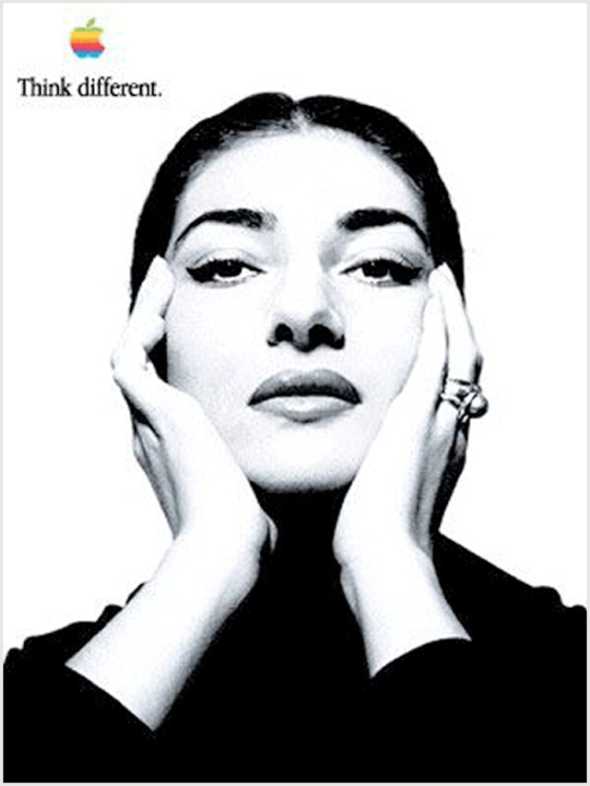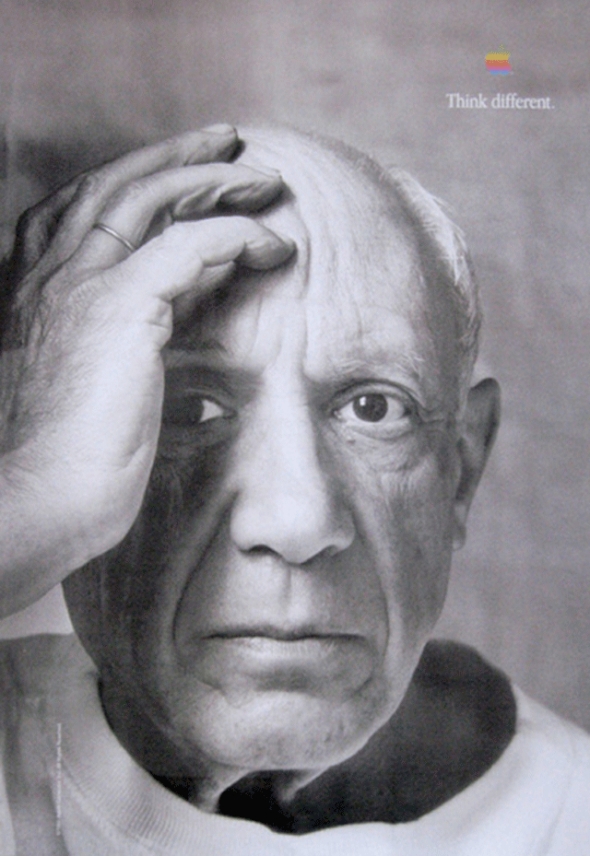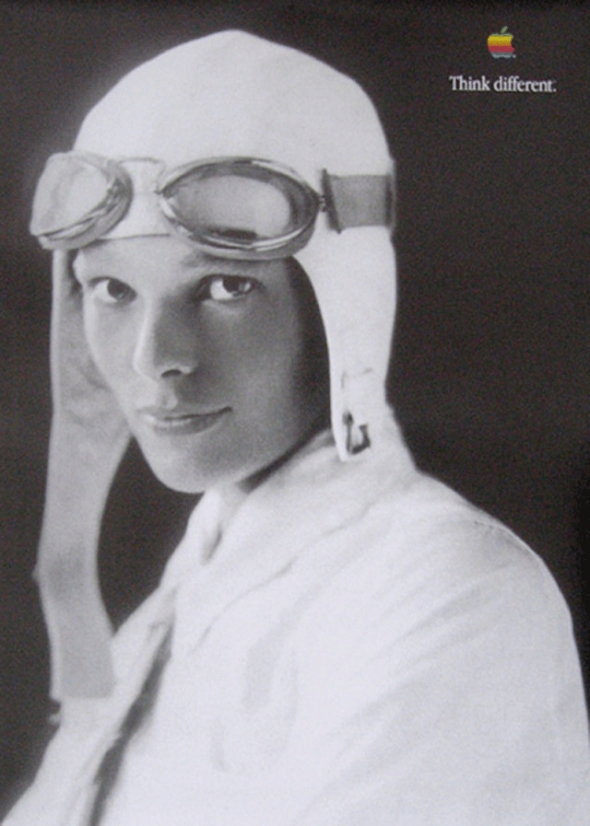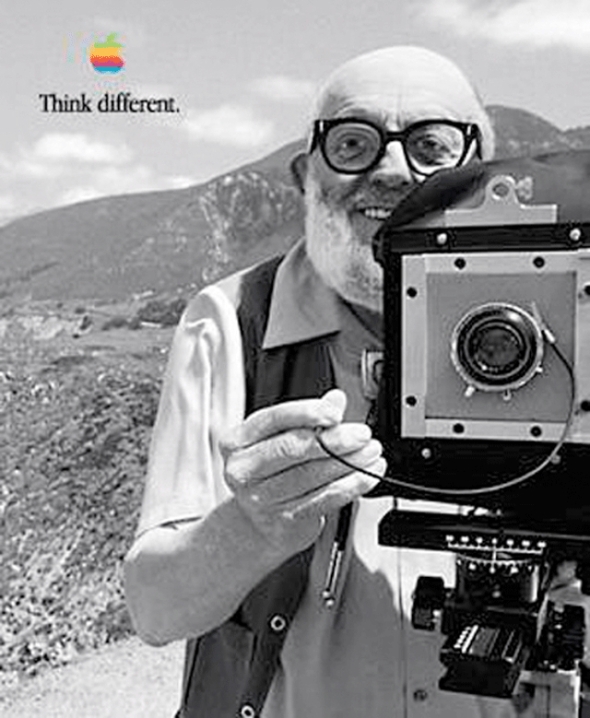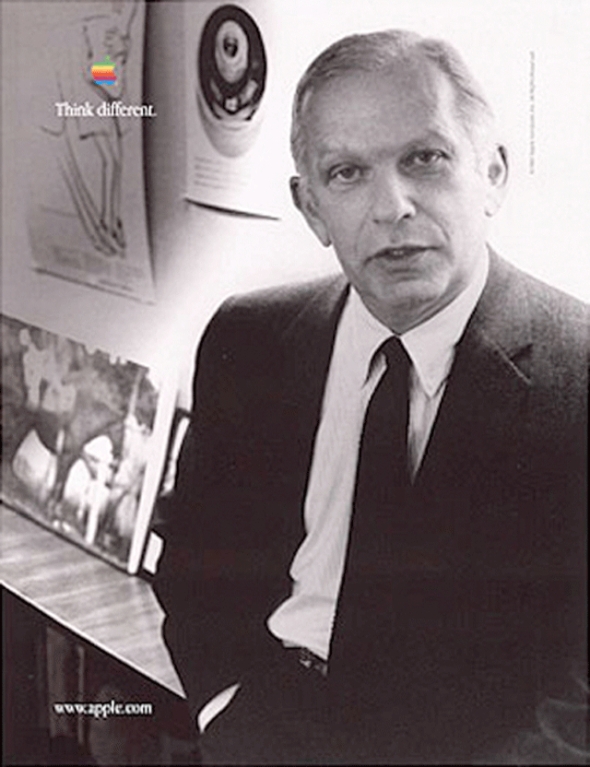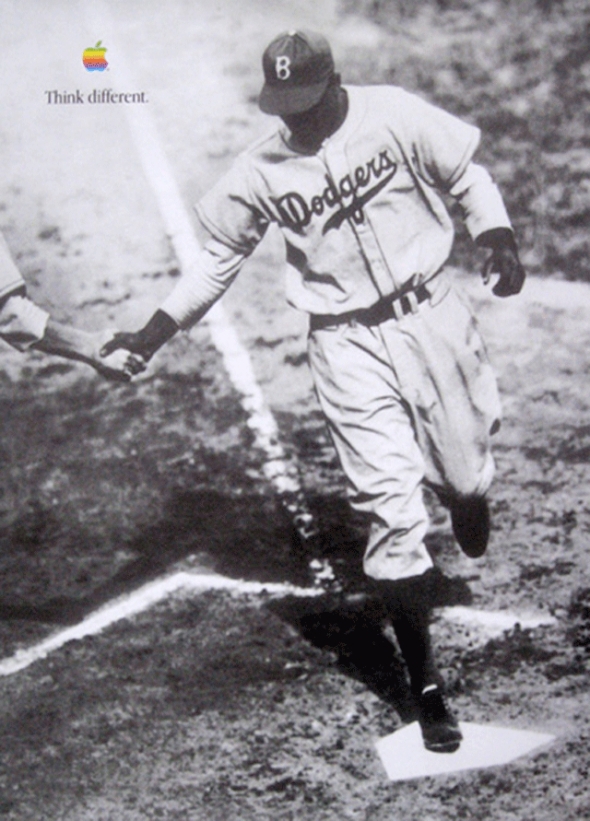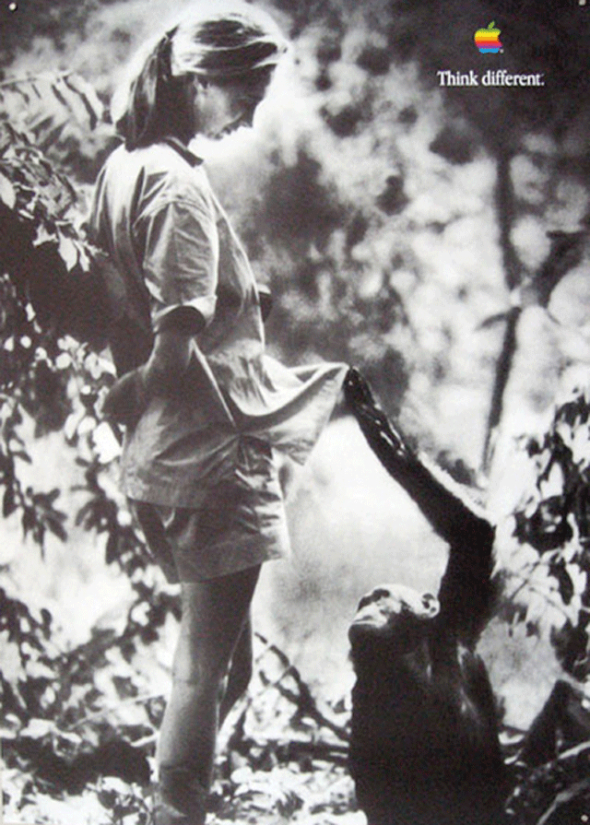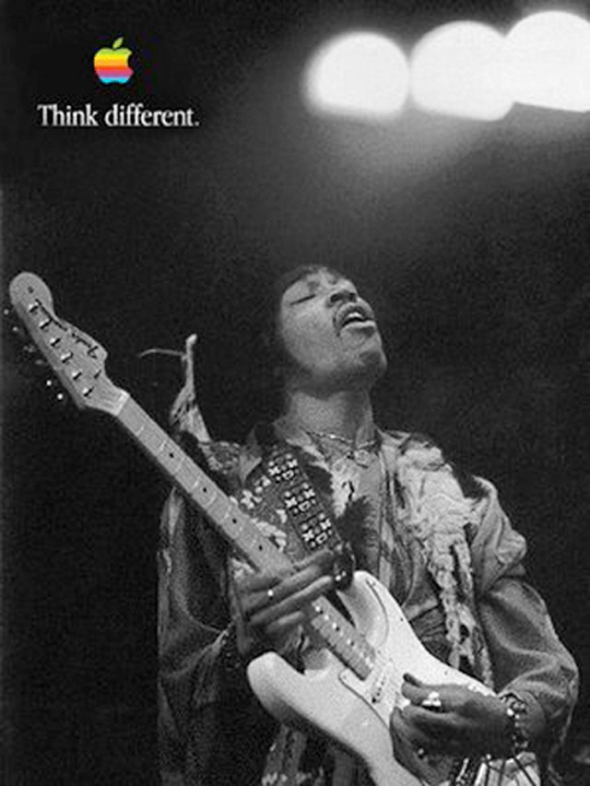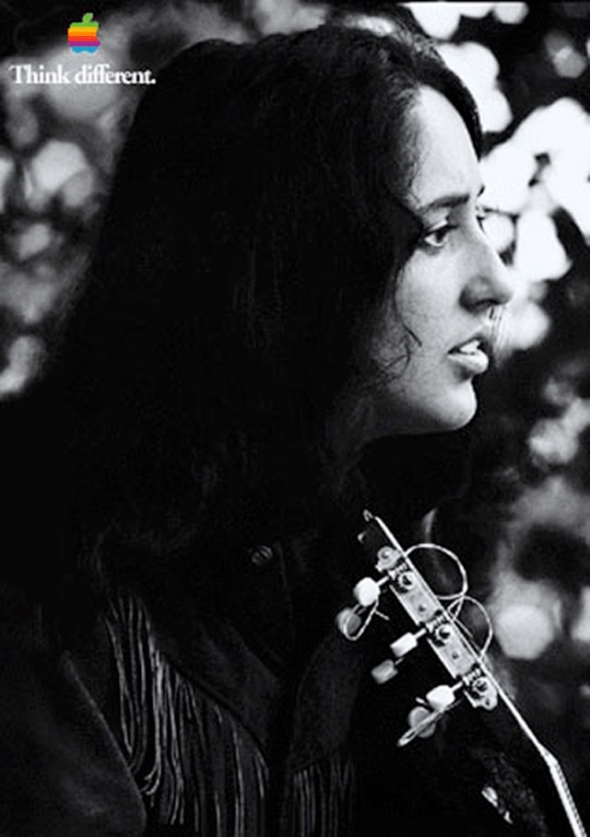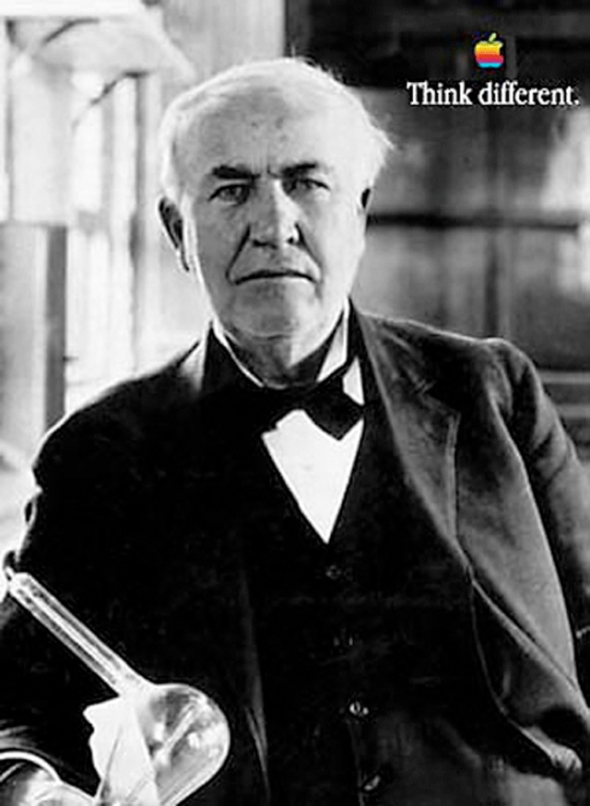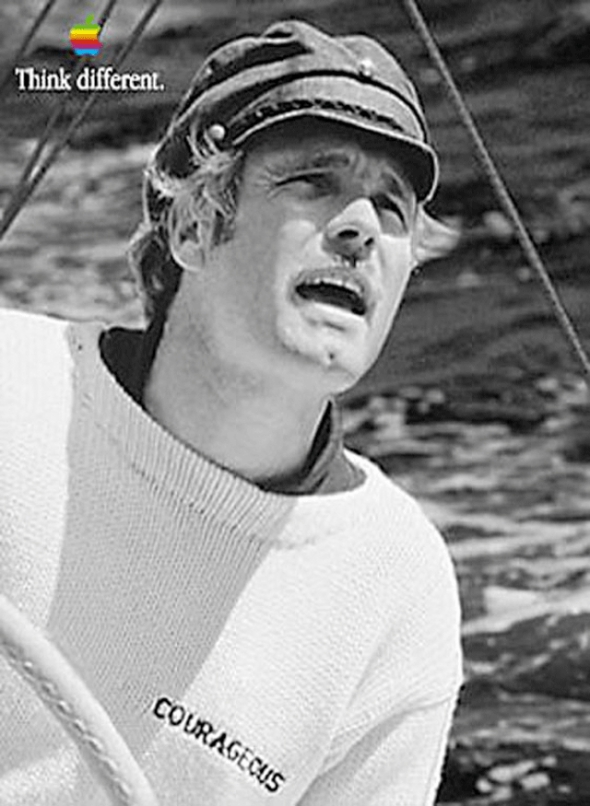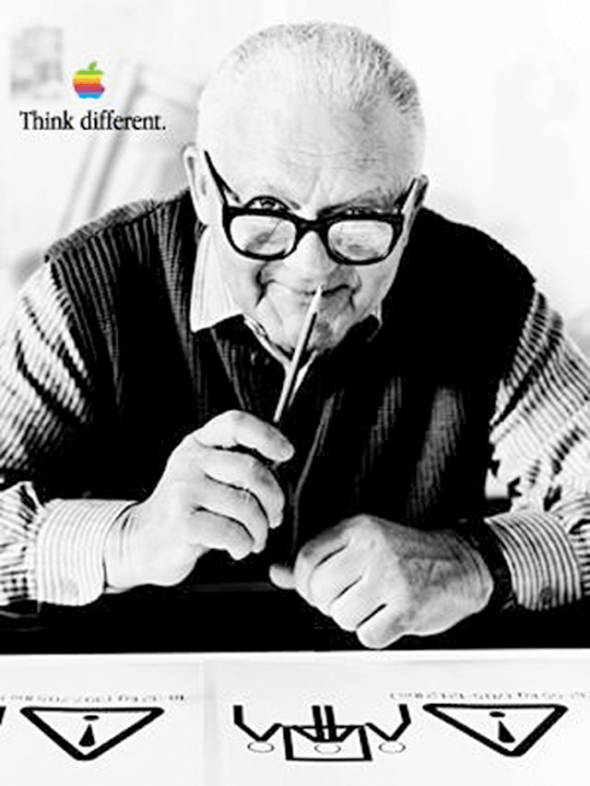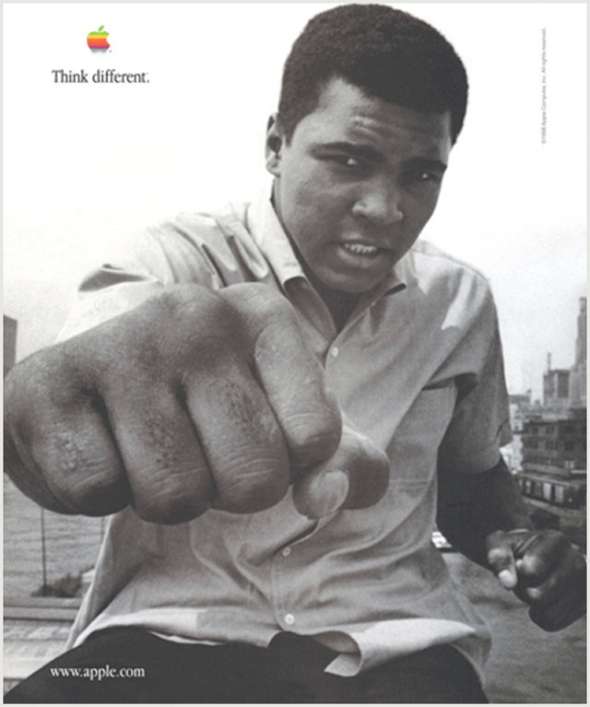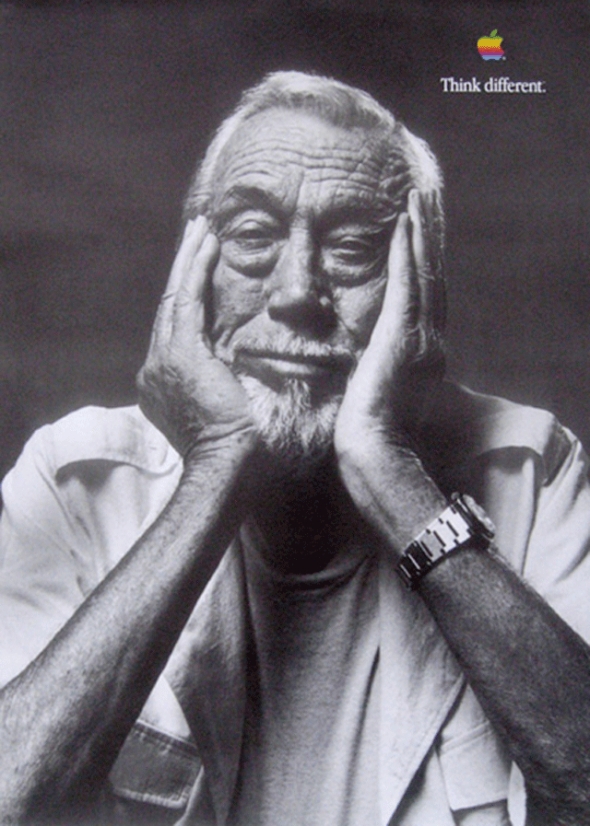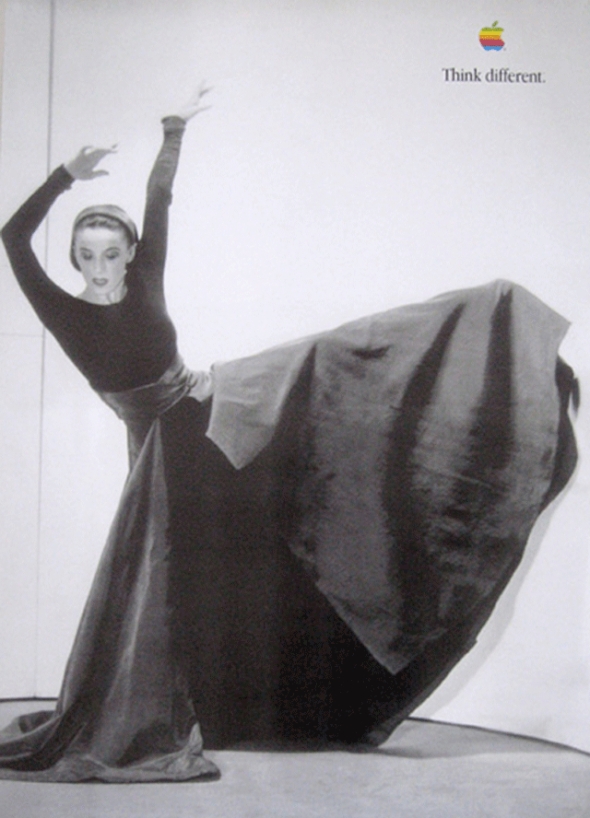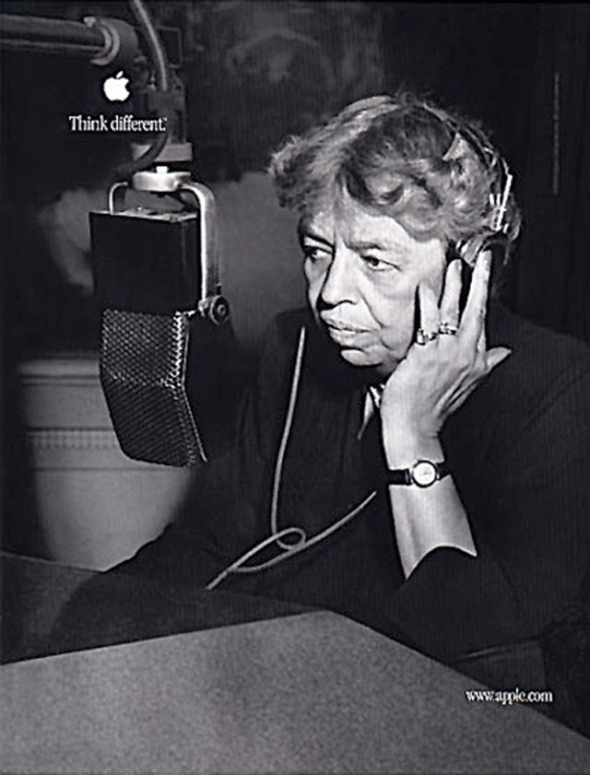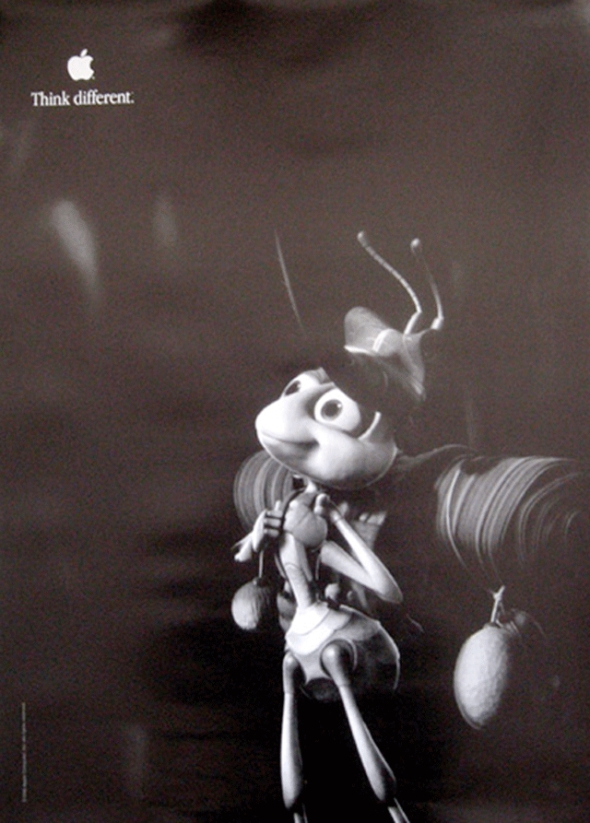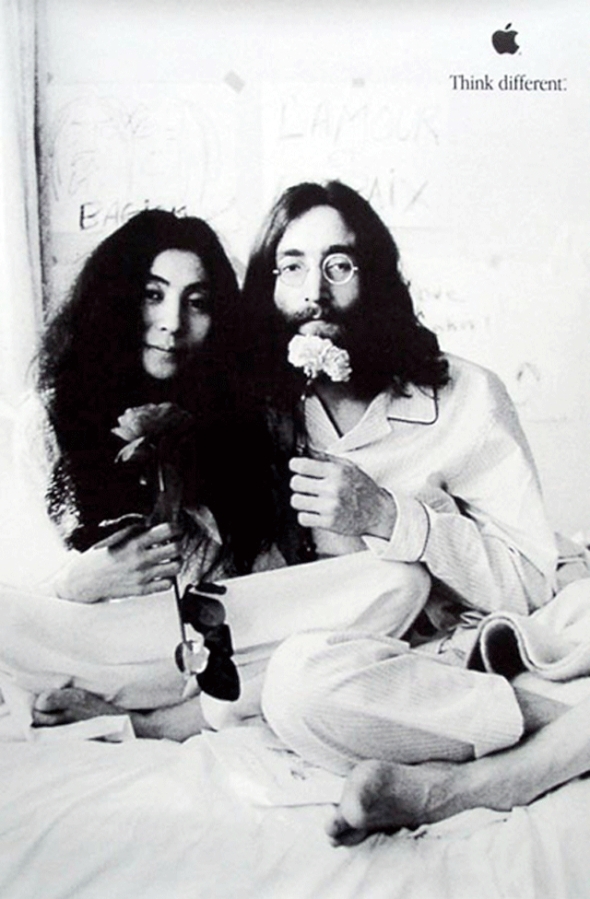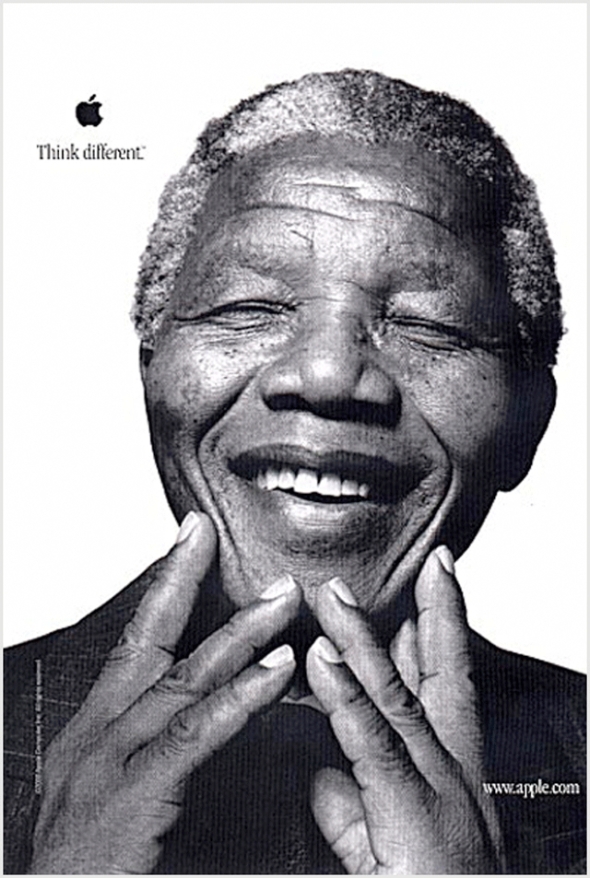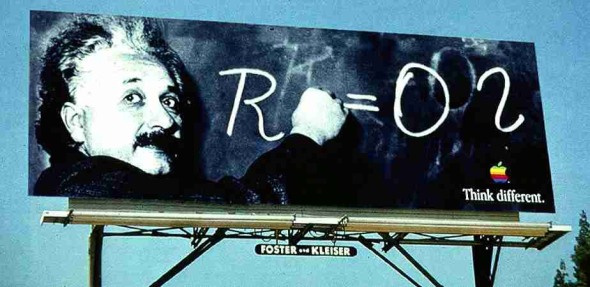BBC – Attenborough’s Wonderful World
Posted: November 8, 2012 Filed under: Best Use of Television, Copywriting, Testimonial, TV/Film, UK | Tags: advertising, Attenborough, BBC, Frozen Planet, Louie Armstrong, RKCR, UK, What a Wonderful World, Y&R Leave a commentOne year ago, following the final episode of the Attenborough-narrated cold-climes series Frozen Planet, the BBC aired a two-minute trailer subtly celebrating the 60-odd years that the iconic TV personality has spent working on non-fiction programming for the network. Visually, the spot, from ad agency RKCR/Y&R, doesn’t deviate far from the staple shots of most natural science shows. Brightly colored birds, time lapses of blooming flowers, panoramas of majestic terrain, and pensive baboons all make their obligatory appearances. How can you not love this? It’s surprising and clever, yet also dignified. The only words in it are from the song ” What a Wonderful World” written by Bob Thiele and George David Weiss, and of course made famous by Louie Armstrong. This works so well because Attenborough speaks the lyrics—pleasant platitudes that we’ve almost stopped noticing, as the song has become audio wallpaper—in his signature cadence of wonder and delight. This renews our appreciation both of the song, and the power of Attenborough’s delivery. And of course, it’s all done to support stunning footage of nature, nicely edited with subtle sound effects to match the pictures. More than the sum of its parts. “It’s a wonderful world, watch it with us,” reads the BBC trailer’s tagline. Fantastic.
Advertising Agency: RKCR/Y&R, UK
Executive Creative Director: Mark Roalfe
Creatives: Ted Heath, Paul Angus
From TV IS GOOD to WE LOVE TV – The controversial story of ABC campaign
Posted: August 28, 2012 Filed under: Case History, Copywriting, Legendary, Press/Outdoor, USA | Tags: ABC, ABC yellow ads, advertising, Alan Cohen, America’s Broadcasting Company, Before TV, Case History, Lee Clow, Life Is Short. Watch TV, Outdoor, TBWA/Chiat/Day, tv is good, two world wars. After TV, USA, we love tv, zero Leave a commentTraditionally, every summer the broadcast television networks launched marketing campaigns to spotlight their program offerings for the coming season. The campaigns were often uneventful and run-of-the-mill, with viewers and the media paying little notice. In 1997, however, ABC, unveiled a different kind of campaign created by TBWA\Chiat\Day in Los Angeles. The campaign, called ‘‘TV Is Good,’’ was designed to help ABC break out of the traditional confines of network slogans and logos, and it created a stir.
Targeting viewers aged 18 to 49 and leveraging a budget of $12 million in its first season, ‘‘TV Is Good’’ directly addressed the guilt associated with watching television. Commercials featured messages that verged on the cynical, such as ‘‘Don’t worry, you’ve got billions of brain cells,’’ and ‘‘Life Is Short. Watch TV.’’ While many in the media criticized the campaign’s apparently insincere celebration of decadent TV-watching, the resulting debate about the merits of ‘‘TV Is Good’’ built considerable buzz around the ABC brand. A 1998–99 modification of the campaign, budgeted at $15 million and tagged ‘‘We Love TV,’’ further contributed to ABC’s emerging personality.
This tactic did not please everyone. For example, Joseph Turow, professor of media at the University of Pennsylvania’s Annenberg School for Communication, said of the ‘‘TV Is Good’’ campaign, ‘‘I don’t think they care if it turns off people who are over the hill. Advertisers and networks are really getting manic about attracting people under 30.’’ Alan Cohen, ABC’s executive vice president for marketing, said that the network was not intentionally spurning people over 49. Cohen told the Pittsburgh Post-Gazette that, when ABC tested its campaign promos on viewers aged 18–54, ‘‘The campaign played universally the same . . . The audience is right with us on this.’’
The Strategy
ABC’s third-place position in the ratings convinced its executives that the time was right to try something completely different. As Cohen told Broadcasting & Cable, ‘‘When you’re not number one, you have to take more chances.’’ ABC’s research had revealed that most television viewers could not distinguish between the existing network advertising slogans and that most people tended to ignore logos or stars repeating catchphrases. Cohen said, ‘‘They were all drowning out each other, and it left networks without a brand identity.’’
The goal of the ABC campaign was clear. Cohen explained to the Salt Lake Tribune, ‘‘We want to establish an attitude and personality for ABC that’s funny, friendly, and irreverent.’’ Through test and focus groups the network had further discovered that people enjoyed television more than they were willing to admit, and as Lee Clow, TBWA\Chiat\Day’s chairman, explained, the agency based its creative approach on this knowledge. ‘‘As you talk to people about their lives these days and how stressed they are, TV is this period of time where they actually get to recuperate a little bit,’’ Clow said. ‘‘Kind of just plop yourself down and let something happen to you so you don’t have to use your brain and work too hard for a few minutes. So we thought, why not kind of honestly celebrate the notion that TV is a good part of our lives, and sitting down in front of it for a while isn’t a bad thing.’’
Launching a marketing campaign that celebrated television was not without risks in 1997. At the time there was outspoken criticism of television, with many people objecting to the sexual situations, strong language, and violence found in the programming. By choosing to praise television at a time when it was popular to criticize the medium, ABC knew that it was taking a chance. The first phase of the campaign, which did not mention specific network programs, appeared on television.
The Campaign
These spots established the visual elements that would define the campaign throughout its run: a yellow background on which appeared the black text of witty slogans offering a variety of takes on the ‘‘TV Is Good’’ theme. The initial wave of spots featured messages such as ‘‘Don’t worry, you’ve got billions of brain cells,’’ ‘‘You can talk to your wife anytime,’’ ‘‘The couch is your friend,’’ and ‘‘Life is short. Watch TV.’’ Print and billboard ads appeared next, and, finally, the network began running spots for individual shows that incorporated the campaign style. The budget for ‘‘TV Is Good’’ was approximately $12 million in 1997–98.
The TV spots got the attention of the press even before they were first broadcast. The message was quickly picked up by newspaper writers, and ABC was thrust into the media spotlight. Under the headline ‘‘Ads that Rot Your Brain,’’ Jonathan Foreman of the Wall Street Journal wrote, ‘‘The new TV season gets under way this week, amidst one of the worst ad campaigns of all time. In an apparent effort to win over the young viewers of ‘Generation X,’ ABC settled on irony as an advertising gimmick.’’ Monica Collins of the Boston Herald said, ‘‘At ABC, they’re underestimating us like mad while the network runs the snootiest ad campaign ever.’’ Some ABC affiliates had misgivings about the advertisements, too. Complaints from several affiliates convinced the network to drop one spot that said, ‘‘Books are overrated.’’ In addition, organizations critical of television, including the nonprofit TV-Free America, blasted the commercials. As the spots began to air and the media debate about the campaign’s merits gathered steam, Cohen told Bill Carter of the New York Times, ‘‘The reality is the spots have already worked. People are talking about ABC.’’ Jamie Tarses, then the entertainment president for ABC, told Broadcasting & Cable, ‘‘Anybody would give their left arm for this kind of attention. This is what you want if you’re selling television shows or cars or whatever . . . It’s about making noise.’’
From TV IS GOOD to WE LOVE TV
For the 1998–99 TV season, TBWA\Chiat\Day offered what it called an ‘‘evolved’’ version of the campaign, which, according to the New York Times, ‘‘is adspeak for ‘You don’t like it? All right, already! We’ll change it.’’’ The ironic humor was toned down, and ‘‘TV Is Good’’ was changed to the slightly more sincere ‘‘We Love TV.’’
The messages continued to be delivered in the same visual style (black text on a bright yellow background), and many seemed in keeping with the brashness of the previous seasons. For instance, one spot advised viewers, ‘‘Don’t just sit there. Okay, just sit there’’ another offered the dubious historical interpretation ‘‘Before TV, two world wars. After TV, zero.’’ But the campaign also began to offer less polarizing messages, such as ‘‘TV, so good they named a frozen meal after it,’’ and ‘‘Without a TV, how would you know where to put the sofa?’’ .
The 1998–99 season likewise marked an increase in series-specific commercials using the overall campaign’s visual elements, humorous tone, and tagline. The campaign budget for that season was estimated at $15 million.
ABC saw its ‘‘TV Is Good’’ campaign as successful for a number of reasons. First, the campaign received an impressive amount of press coverage. Second, another of the big three networks added to the publicity windfall by mocking the campaign with a television spot of its own. Third, public response to the campaign was mostly favorable. Cohen said to Tom Feran of the Cleveland Plain Dealer, ‘‘We did talk to a lot of viewers around the country and show them this material, and I think people sort of got it. They said, ‘Wow, this is funny. ABC is funny. They must have good comedies.’ And that’s exactly the connection we wanted them to make.’’
In the 1999–2000 season ABC and TBWA\Chiat\Day further redefined the brand-building project. Although the network’s promotional spots continued to employ the visual elements and a measure of the ironic humor from the previous two seasons’ campaigns, the new tagline, ‘‘America’s Broadcasting Company,’’ seemed to mark a departure in tone and strategy. The network and its agency maintained that the campaign was not a reversal of the previous years’ tactics but rather a further evolution. This view was supported by a recurring message in the ‘‘America’s Broadcasting Company’’ spots: ‘‘United we watch.’’
Cadbury and the Joy of Content – The story of Glass and a Half Full Productions
Posted: June 4, 2012 Filed under: Argentina, Axa, Belgium, Copywriting, India, Russia, The Philippines, Typography, USA | Tags: advertising, Blink, Cadbury Dairy Milk, Case History, charity Shop, chocolate charmer, commercial, content of joy, cow tap dancer, dancing clothes, dogs in cars, don't stop me now, Don't Stop the Rock, Eyebrows, Fallon London, Freestyle, freida, Glass and a Half Full Productions, gorilla, In the Air Tonight, Juan Cabral, Monks, ostrich, Phil Collins, Queen, Richard Flintham, Trucks, UK 1 CommentBy 2007 Cadbury Dairy Milk (CDM) was running out of steam; facing flatlining sales, losing relevance to younger generations and with an advertising model that felt tired. The solution was to create Glass and a Half Full Productions, a content-led campaign including ‘Gorilla’, ‘Eyebrows’ and ‘Trucks’. The new direction moved CDM from being a manufacturer of chocolate to a producer of joy. It also created a debate around whether creating ‘joyful’ content rather than ‘persuasive’ advertising featuring chocolate actually works or not. The whole campaign delivered a master brand payback 171% greater than previous campaigns, with ‘Gorilla’ alone delivering an incremental revenue return of £4.88 for every £1 spent.
This case is a great example of an incredibly powerful and effective campaign in the face of a tricky market that is seasonal and unhealthy. Cadbury successfully cut through media criticism with brave but fantastic creative work that captured the public’s imagination.
—————————————————————————————————————————————————————————–
Gorilla (2007)
In 2007, Cadbury launched a new advertising campaign entitled Gorilla, from a new in-house production company called “Glass And A Half Full Productions”. The advert was premièred during the season finale of Big Brother 2007, and consists of a gorilla at a drum kit, drumming along to the Phil Collins song “In the Air Tonight”. The creative idea for the campaign is founded upon the notion that all communications should be as effortlessly enjoyable as eating the bar itself. For ‘Glass and a Half Full Productions’ is a production house that exists solely to create content that makes you feel as if you’ve just eaten a bar of Cadbury Dairy Milk. A production house that makes things that make you smile. The advert has now become extremely popular with over five million views on YouTube, and put the Phil Collins hit back into the UK charts.
“I don’t know what this has to do with Cadbury Dairy Milk, but it’s funny. Among gorilla drummers, it seems the work of Phil Collins inspires a genuine cosmic connection” Tim Nudd, ADWEEK, August 31 2007
Advertising Agency: Fallon London
Creative: Richard Flintham/Juan Cabral
Director: Juan Cabral
Production Company: Blink
Producer: Matthew Fone
DoP: Dan Bronks
Editor: Joe Guest at Final Cut
—————————————————————————————————————————————————————————–
Trucks (2008)
On 28 March 2008, the second Dairy Milk advert produced by Glass and a Half Full Productions aired. The ad, entitled ‘Trucks’ features several trucks at night on an empty runway at a airport racing to the tune of Queen’s Don’t Stop Me Now.
Like “Gorilla”, Trucks is based on an offbeat concept set to a 1970s/80s rock soundtrack. It features a midnight drag race down an airport runway, using a range of vehicles including baggage transporters and motorised stairs. Trucks again highlights the skill of director Juan Cabral. It is beautifully choreographed and lit, with glossy production values and an energy that perfectly matches the music. It has a Top-Gear-meets-Wacky-Races appeal that will stand up to repeated viewings. It makes you wonder whether this is what’s going on behind the scenes at Terminal 5 – the baggage handling certainly leaves something to be desired.
According to Fallon, it took three weeks to “pimp” the trucks, the heaviest of which, the blue truck, weighed in at 25 tons. Shots of a tiny “underdog” battling against the giant provide human interest. The six-night shoot at an airport in Mexico involved 140 crew, two 35mm film cameras, two high-definition cameras and one crash-cam.
“We could have created Gorilla 2 and had him playing a trumpet,” the Cadbury marketing director, Philip Rumbol, told last Monday’s MediaGuardian section. “But that would have been too linear. It has to have a slightly enigmatic quality.”
“Trucks” therefore has a lot to live up to. It has a quirky charm, but is unlikely to change perceptions of the brand in the same way that its predecessor did. Gorilla became the ad phenomenon of last year – it was voted the public’s favourite TV ad of last year and won TV commercial of the year at the British Television Advertising Awards. It has also been credited with turning Cadbury’s fortunes around, helping the chocolate maker reverse the damage done by a 2006 salmonella scare and boost its UK market share last year. The Cadbury chief executive, Todd Stitzer, hailed 2007 as “the year of the gorilla”.
Queen’s Don’t Stop Me Now was reportedly chosen for “Trucks” from a final shortlist consisting of Bon Jovi’s Living on a Prayer and Europe’s The Final Countdown. Picking the follow-up to a major hit is a notoriously tricky business. Whether Cadbury has got it right this time is open to debate, but at least it avoided the obvious “Gorilla 2” route.
Advertising Agency: Fallon London
Creative: Juan Cabral
Director: Juan Cabral
Production Company: Blink
Producer: Matthew Fone
DoP: Dan Bronks
Editor: Joe Guest at Final Cut
—————————————————————————————————————————————————————————–
Gorilla & Trucks – Official Remix (2008)
On 5 September 2008, the Gorilla advert was relaunched with a new soundtrack – Bonnie Tyler’s Total Eclipse of the Heart – a reference to online mash-up of the commercial. Similarly, a version of the Truck advert appeared, using Bon Jovi’s song Livin’ on a Prayer. Both remakes premiered once again during the finale of Big Brother 2008.
—————————————————————————————————————————————————————————–
Eyebrows (2009)
In January 2009, ‘Eyebrows’, the third advert in the series, was released, of two children moving their eyebrows up and down rapidly to a set electro-funk beat: “Don’t Stop the Rock” by Freestyle.
The idea: Taking that moment of joy when you seize the opportunity to get away with your own little stunt, like making a funny face as your family portrait is being taken.The ad, by agency Fallon, opens with a brother and sister – wearing a dress in the trademark Cadbury purple – sitting for what appears to be a standard school photograph session. However, when the photographer leaves the shot the boy starts an electro tune, Don’t Stop the Rock by Freestyle, on his watch.
“Over at Glass and a Half Full Productions we noticed the wriggly potential of eyebrows and thought we would have a bit of fun with them,” said the Cadbury marketing director, Phil Rumbol. “Like the other productions ‘Eyebrows’ is all about losing yourself and embracing that moment of joy … after all, everybody remembers pulling a silly face or getting up to no good as a child when backs were turned.”
The one-minute film for Cadbury’s Dairy Milk chocolate is thought to have been viewed more than four million times on YouTube and similar sites in its first three weeks. It is twice the number of viewings racked up at the same stage by the firm’s previous cult clip, in which a gorilla plays drums to Phil Collins’s In the Air Tonight. The eyebrows advert was first shown during the final of Celebrity Big Brother on Channel 4 and is still shown on television but its online success has been boosted by various links including one from the blog of American rapper and producer Kanye West and another from celebrity gossip blogger Perez Hilton. Cadbury’s has since struck a deal with Orange to give away the soundtrack as a mobile phone ringtone, which was downloaded 125,000 times in the first 11 days.
Lee Rolston, director of marketing for Cadbury Dairy Milk, told The Observer: “Television and online are morphing almost daily. We tend to put our first ads in big things such as the Big Brother final or the X Factor, then it’s immediately online, which becomes a very fluid, organic process. People tend to interact with the films and make their own versions and their own music. We just let it go and see what people think of it.”
Chris Hassell, director of Ralph, digital design agency specialising in viral advertising, said: “I saw it online first, which is the way it works now. When someone says ‘Did you see that ad?’, the first thing you do is look it up on YouTube.”
Advertising Agency: Fallon London
Creative: Richard Flintham, Chris Bovill, John Allison
Director: Tom Kuntz
Production Company: MZJ
—————————————————————————————————————————————————————————–
Dogs in Cars (2009)
Cadbury has launched the fourth A Glass and a Half Full Productions commercial, “Dogs”, featuring the music of the Blue Danube Waltz by Johann Strauss II. Dogs take turns riding in a purple Lamborghini Diablo on the Oran Park Raceway in Sydney, letting the air blow past them as they hang out the window. A Glass and A Half Full of Joy!
The fourth commercial in the Cadbury series, airing internationally, conceived by Fallon London and produced in Australia by sister Publicis shop Saatchi & Saatchi, Sydney. This spot is designed to make people smile by showing the joy when different breeds of dog enjoy the air rushing by when their heads are sticking out of an iconic Lamborghini Diablo as it races around Sydney’s Oran Park Raceway. (This spot was originally shot and aired in the UK, but because the sky was grey, the decision was made to re-shoot in OZ on a bright sunny day).
Creative Director: Steve Back
Production Company: Caravan @ The Feds
Director: Ben Lawrence
—————————————————————————————————————————————————————————–
Freida (2010)
In 2010 Cadbury has launched A Glass and a Half Full of Smoothness in New Zealand with tap dancing cows, doing the moves to Fred Astaire’s song, “Putting on the Ritz”. The ad screened for the first time this week during the first ad break of Desperate Housewives. The spot opens with a close up of a black and white cow’s face before heading into the slick little number. The ad finishes with the cow pushing aside mirrors and opening a purple curtain to finish with an ensemble act.. This is the first Cadbury spot in the series not conceived by Fallon, London.
—————————————————————————————————————————————————————————–
Chocolate Charmer (2010)
In April 2010, a new advert aired, entitled Chocolate Charmer, containing a scientist mixing milk and chocolate to make a dairy milk bar to the tune of “The Only One I Know” by The Charlatans. This was subtly different to the others as it did not feature the ‘A Glass and a Half Full Production’ title card at the start. The 60-second TV spot takes viewers into the “magical” world of Cadbury Dairy Milk production where the chocolate charmer creates bars of milk chocolate. As the ad unfolds, the Charmer “conducts” towers of chocolate milk out of spinning glass bowls, orchestrated by levers and pulleys and his “magical powers” with chocolate.
Advertising Agency: Fallon London
Creative: Richard Flintham, Nils-Petter Lovgren, Filip Tyden, Dan Watt
Director: Henrik Hallgren
Production Company: The Moving Picture Company
—————————————————————————————————————————————————————————–
Ostrich (2010)
The spot continues Cadbury’s ‘Glass and a Half Full Productions’ concept, which began with Fallon’s Dairy Milk TV ad ‘Gorilla’ in the UK in 2007.
The TVC was created by Saatchi & Saatchi Johannesburg. Their Executive Creative Director, Adam Wittert, says, “The brief was to make people feel the same joy they experience when they eat Cadbury Dairy Milk, so we came up with the idea of an ostrich and an ostrich, being a bird, would find the ultimate joy in flying. So our ostrich goes sky diving.”
The ad begins with an ostrich walking purposefully through a stack of wooden crates. It then becomes apparent that he is in the cargo hold of an airplane; the cargo door gradually opens and the ostrich takes a leap into the air like a sky diver, with the song “I gotta be me” by Sammy Davis Jr coming to a crescendo. The ostrich gleefully flies through the sky into the sunset, before pulling the ripchord to his Cadbury-branded parachute at the last minute, with the strapline ‘A glass and a half full of joy’ appearing beneath.
Saatchi & Saatchi Johannesburg managing director, Grant Meldrum, said that the Johannesburg office worked closely with Saatchi & Saatchi Fallon in the UK: “This ensured that we produced a TV commercial that would have global appeal and, at the same time, underpinned the possibilities of achieving pure joy and remained true to the brand’s proposition.”
Advertising Agency: Saatchi & Saatchi Johannesburg
Creative: Adam Wittert, Keisha Meyerson, Bruce Murphy
Director: Peter Truckel
Production Company: Catapult Commercials
—————————————————————————————————————————————————————————–
Dancing Clothes (2011)
In April 2011, a new advert aired, known as ‘Charity Shop’ or ‘Dancing Clothes’, featuring dancing clothes at a charity shop to the tune of We Don’t Have to Take Our Clothes Off by Jermaine Stewart. This exposed the song to a new generation who downloaded the track and returned the song to the UK Top 40 so far reaching no. 29. This ad also marks the return of the Glass and a Half Full title card.
The ad, created by Fallon, features dancing clothes in an initially lifeless charity shop. Individual clothes fall from the rails, rise from the floor and burst from cupboards, and the charity shop is transformed into a dancing extravaganza. Julie Reynolds, marketing manager for Cadbury Dairy Milk, said: “For us Cadbury Dairy Milk is about creating moments of joy that make people smile. We believe this production is another great way of doing just that.”
Advertising Agency: Fallon London
Creative: Augusto Sola, Sam Hibbard
Director: Megaforce
Production Company: Riff Raff Films
—————————————————————————————————————————————————————————–
Monks (2011)
Cadbury Dairy Milk Chocolate has a long heritage of giving joy. In this experience we highlight how people in a strict and disciplined environment break out and let loose when Cadbury’s drops in. It’s the equivalent of the drill sergeant cutting the troop a break, or a strict boarding school nun letting the bunking girls off. When our stern teacher is given the opportunity to teach his pupils a lesson, he shows them how to let loose. Pretty soon the whole class is laughing, dancing and thoroughly enjoying themselves as much as the people witnessing this moment of joy.
Filmed entirely on location in rural China, the commercial captures a surreal moment of pure joy in a Buddhist monastery. A temple gathering takes a new turn with the addition of purple helium-filled balloons, with the monks released to groove to the sounds of Flo Rida track “Low”, starting with the chorus line, “apple bottom jeans, boots with the fur”.
Advertising Agency: Fallon London
Creative: Augusto Sola, Sam Hibbard
Director: Megaforce
Production Company: Riff Raff Films
Friday the 13th (and Jason) in advertising
Posted: April 13, 2012 Filed under: Car, Copywriting, Graphic, Illustration, Press/Outdoor, Testimonial | Tags: advertising, bad eggs, baygon, friday the 12thketchup, Friday The 13th, funny, home depot, horror, Jason, parody, renault 2 CommentsBaygon
Game World against piracy
Home Depot
Burger King
Dexter on Channel 4
In&Out (Gay Club)
Screamfest (Horror Film Festival)
Nulaid Eggs
Popeye Detergent
Renault Megane
Xanlite
C-I-O/Photographer
Priceminister.com
Regal Ketchup
Hell Party (Klub Abaton)
Hi-Fi Klubben
Science World
Showoff (Production Company)
Visa
BETC Euro RSCG for Canal+ | Never underestimate the power of a great creativity
Posted: October 12, 2011 Filed under: Cannes Lions, Copywriting, France, Press/Outdoor, TV/Film | Tags: action, animated, Baker Smith, Benjamin Sanial, BETC Euro RSCG, black bands, Brokeback Mountain, bronze lion, Canal +, Canal pus, Cannes Lions, car bomb exploding, carlos, closet, David Troquier, Eric Astorgue, Flowchart, France, Fredrik Bond, funny, gold lion, Gregory Ferembach, Harvest, horror, huffing, Jean-Cristophe Royer, Les Graphiquants, Luc Rouzier, Mafia, March of Emperor, Matthijs van Heijningen, Nathalie Dupont, parody, Partizan, paul bearman, Pierre Riess, porn, Press, puffing, radical media, Raphael Halin, Romain Guillon, Santa Monica, silver lion, Stephane Xiberras, The bear, The Glue Society, the inclination, tick, trailer, TV/Film, Versailles, Visigoths, Wanda productions, Wilfrid Brimo, Xavier Gianolli Leave a commentVISIGOTHS/BLACK BANDS
A spectacular battle scene between two tribes, featuring thousands of warriors. We are on a film set. The take has to be re-shot, which will help us understand why actors are so good at playing dead.
This is a humorous spot revealing that the black bands you often see within the television viewing box are actually created, they are not the filming format which has not been adapted to the televisio
Creative Director: Stephane Xiberras
Copywriter: Marc Rosier
Art Director: Jean Marc Tramoni
Production: Premiere Heure/Harvest, Santa Monica
Director: Baker Smith
Year: 2003
Shortlist
MARCH OF EMPEROR
March of the penguins but with actual emperor’s not emperor penguins.
Creative Director: Stephane Xiberras
Copywriter: Pierre Riess/Luc Rouzier
Art Director: Romain Guillon/Eric Astorgue
Production: @radical.media, New York
Director: Glue Society
Year: 2006
Gold Lion
BROKEBACK MOUNTAIN
A woman tells her friend about a really good film that she had seen on CANAL+ ‘Brokeback Mountain.’ From this description, her friend interprets a totally different, totally absurd, scenario.
Creative Director: Stephane Xiberras
Production Partizan, Paris
Director: Les Elvis
Year: 2007
Shortlist
HOLD UP
Creative Director: Stephane Xiberras
Copywriter: Nathalie Dupont
Art Director: Francis de Ligt
Production Company: Sonny PH
Director: Fredrik Bond
Year: 2008
Shortlist
VERSAILLES/MAFIA
We are taken back in time to a period film set in the Chateau de Versailles where the characters are all bizarrely huffing and puffing through their lines. Final scene cuts to a woman jogging, recounting the plot to another woman, and huffing and puffing as she recounts it. The signature reveals “CANAL+ Movies are made to be seen”
We see a stereotypical scene from a mafia movie where all the characters have a strange tick. Final scene cuts to a boy recounting the plot to his friend, constantly flicking his hair as he does so. The signature reveals “CANAL+ Movies are made to be seen”
Creative Director: Stephane Xiberras
Copywriter: Nathalie Dupont
Art Director: Francis De Ligt
Production Company: Irene, Paris
Director: Xavier Gianolli
Year: 2009
Shortlist
CLOSET
Canal+ launched its new ‘Original Creativity’ campaign in September 2009. The objective highlight to Canal+’s showcase of original programming, consisting of series, documentaries and fictions, created exclusively by and for Canal+, scripted by prestigious writers such as Olivier Marchal and Jean- Hugues Anglade. To launch this new campaign, we produced THE CLOSET. The film unites quality, humour, originality and a touch of impertinence inherent to the brand’s communications: ‘Never underestimate the power of a great story’.
Creative Director: Stephane Xiberras
Copywriter: Jean-Cristophe Royer
Art Director: Eric Astorgue
Production Company: Soixan7e Quin5e, Paris
Director: Matthijs van Heijningen
Year: 2010
Gold Lion and 2 Bronze Lions
THE INCLINATION (IPHONE)
The agency created a campaign that fits in with the advertising success story of Canal+: diving into the world of TV programmes with the now classic disrupting phenomenon, played out here through the characteristic functionalities of the iPhone. In the TV ad, it is the iPhoneʼs trademark tipping to the side into landscape format that completely disrupts the romantic scene of a great Hollywood film. A couple are about to kiss, when suddenly the entire set falls over to one side.
Creative Director: Stephane Xiberras
Copywriter: Benjamin Sanial
Art Director: Raphael Halin
Production Company: Moonwalk Film, Paris
Director: The Glue Society
Year: 2011
Shortlist
CARLOS
The trailer begins with a car bomb exploding. As the clip goes backwards we discover that the scene takes place in the middle of a tranquil Paris. Ending with a characteristic “Tick Tock” sound the trailer is designed to intrigue the viewer to watch the series and find out more about the character behind the bomb – Carlos – the terrorist who threatened the world. We wanted to pitch the right tone, a suitably sober approach across all media, to avoid controversy and to avoid falling into the trap of eulogising a character that is, after all, a murderer.
Creative Director: Stephane Xiberras
Copywriter: Charles Lefort
Art Director: Viken Guzel
Production Company: Wanda, Paris
Director: Wilfrid Brimo
Year: 2011
Bronze Lion
FLOWCHART CAMPAIGN: ACTION/ANIMATED/HORROR/PORN/SHORT FILM
Learn how to deal with tight budgets, hung over cameramen, actors not showing up and grumpy directors. TV Channel, Canal+ supports those who make movies simply because making a movie isn’t easy.





Executive Creative Director: Stéphane Xiberras
Creative Director: Olivier Apers
Art Directors / Copywriters: Gregory Ferembach, David Troquier
Illustrator: Les Graphiquants
Year: 2011
Silver Lion for the Campaign
THE BEAR

Canal+ has always been committed to cinema. It is more than a mere broad- caster. It has always sought to go the extra mile for its subscribers and portray the film industry as no one else has done: emphasising the diversity of the genres, deciphering current and future trends, empowering actors and directors, and in general, transmitting the passion of all those who work in the film industry to its subscribers.
Thanks to its varied and cutting-edge program- ming – from blockbus- ters to art films. Thanks to the unique, quality insight that it provides into what goes on in front and behind the camera. Thanks to the unique ties that it maintains with the film industry (Studio CANAL, partnerships, financing, Cannes Festival, the César awards, etc.).
Canal+ and BETC have now come up with a film, The Bear, to remind audiences of the channel’s continuing commitment: to transmit the passion of film- making to its subscribers.
The more you watch Canal+, the more you love cinema.
To make this film, BETC chose to work with Matthjis van Heijningen, who also directed The Closet, which was the most awarded film in 2010 (The Gunn Report).
The tone remains unique, enhanced by the use of 3D to make the bear as expressive as possible. The same creative team, which worked on The Closet, Éric Astorgue and Jean-Christophe Royer, under the supe vision of President and Chief Creative Officer of BETC, Stéphane Xiberras, once again contribute to the distinguishing tone that is so familiar about the ma- jor advertising campaigns of Canal+.
Global Creative Director: Stéphane Xiberras
Art Director: Eric Astorgue, Julien Schmitt
Copywriter: Jean-Christophe Royer
Production Company: Soixante Quinze
Director: Matthijs Van Heijningen
Year: 2011
Apple – Think Different
Posted: September 5, 2011 Filed under: Cannes Lions, Case History, Copywriting, Legendary, Press/Outdoor, TV/Film, USA | Tags: Albert Einstein, Alfred Hitchcock, Apple, Bob Dylan, Case History, Craig Tanimoto, Jennifer Golub, Jerry Seinfeld, John Lennon, Lee Clow, Mahatma Gandhi, Martin Luther King Jr, Mohammed Ali, Picasso, Steve Jobs, TBWA/Chiat/Day, Think Different, TV/Film, USA, yoko ono 2 CommentsThis is the story of one of the most successful campaigns in the history of advertising.
In August 1997 Jobs, who had cofounded Apple Computer in his garage 20 years earlier, returned to the company to become its interim chief executive officer. At that time Apple was in the midst of a crisis. Its share of the computer market had plummeted from a peak of 14 percent in 1993 to below 3 percent four years later. ‘‘The company was in a death spiral…’’ its chief financial officer, Fred Anderson, told Newsweek in 1998. Jobs set out to address the problems. He believed that Apple’s difficulties stemmed from the company’s incoherent agenda, which consisted of efforts to move various products without a clearly defined purpose or method. Jobs attempted to redefine the company’s strategy by concentrating on Apple’s key markets: design and publishing, education, and consumers who purchased personal computers for use in the home. He also cut Apple’s product line from 14 to 4. Jobs took charge of Apple’s image-making process as well. When he arrived back at the company, Apple was running more than 25 different advertising campaigns. The company’s domestic and international sales offices advertised independently from, and were often not coordinated with, the campaigns conducted from Apple’s headquarters in California.
Apple’s advertising agency during this period, BBDO, had opted to focus its advertisements on specific Apple products and the technological features of Apple computers. These efforts did nothing to allay consumers’ fears that Apple’s demise was imminent. ‘‘The talk of Apple going under was the worst thing for the company…’’ said Jessica Schulman, the TBWA\Chiat\Day art director for the ‘‘Think Different’’ campaign. ‘‘People won’t buy computer equipment that they think won’t be around in the next year.’’
Jobs invited three ad agency reps to present new ideas. Lee Clow, now the creative director for Chiat/Day, was one of them. On August 3, 1997, he presented a new slogan and aesthetic for Apple’s ads: Think Different (perhaps a reference to IBM’s famous “THINK” slogan) and montages of artists and creative professionals using the Mac. In an interview with Electric Escape, Clow said that he wanted to feature filmmakers at Dreamworks SKG working on their Macs. Jobs was enamored with the concept, though now using anonymous figures. And instead of Dreamworks filmmakers, he wanted to use celebrities and thinkers. Jobs had long been a fan of black and white portraits and prints. NeXT’s offices were decorated (expensively) with poster-sized prints from Ansel Adams, and Jobs’ manse in Los Gatos was decorated with black and white portraits of his heroes, including Albert Einstein. He began brainstorming on the spot. Chiat/Day was reinstated as the chief advertising agency, and Lee Clow became a regular presence on the Apple Campus. Although the ad was produced entirely by Chiat/Day staff (on Macs, of course), Jobs (sometimes with marketing staffers) reviewed revisions at every step of the process. He used a satellite uplink between City Center 3 and Chiat/Day’s Venice offices to review the clips in full video instead of relying on the mail or compressed files.
Chiat/Day used a totally computer based creative environment. Jobs gave the group 17 days after approval to complete the entire campaign. That included the television commercial and billboards for major markets such as Los Angeles and New York. An ordinary campaign for a more obscure client (or even Apple under Amelio) would have taken much longer just to get rights to the images. Jobs was particularly useful when Clow and his team needed to get usage rights from celebrities including Joan Baez (Jobs’ ex-girlfriend) and Yoko Ono (once a neighbor near Central Park when Jobs lived in the San Remo and Yoko in the Dakota). If Clow had approached these people’s publicists, he would be another adman. When Jobs called, he was a friend and a cult-figure in computer history.
The television commercial was produced using an Avid 4000 system on a Macintosh with Adobe AfterEffects. Jennifer Gulab, who worked on the television commercial, worked very closely with Jobs via satellite link. The two were in contact daily, working out which images would be used (a choice largely based on the availability of images and permissions), the music, and the narration, which was done by Richard Dreyfus. Dreyfus read a free-verse poem, “Here’s to the Crazy Ones”, written by a Chiat/Day copywriter, Craig Tanimoto. This was used extensively throughout the entire campaign. Rumours say that Steve Jobs wrote the original text, for this spot it’s been changed a little.
The commercial consisted of the blackand-white images of the 12 visionary thinkers including (in order) Albert Einstein, Bob Dylan, Martin Luther King, Jr.,Richard Branson, John Lennon (with Yoko Ono), R. Buckminster Fuller, Thomas Edison, Muhammad Ali, Ted Turner, Maria Callas, Mahatma Gandhi, Amelia Earhart, Alfred Hitchcock, Martha Graham, Jim Henson (with Kermit the Frog), Frank Lloyd Wright and Pablo Picasso and the reading of a manifesto read by actor Dreyfuss. ‘‘Here’s to the crazy ones,’’ began the voice-over. ‘‘The misfits. The rebels. The troublemakers. The round pegs in square holes. The ones who see things differently. They’re not fond of rules. And they have no respect for the status quo. You can quote them, disagree with them, glorify or vilify them. About the only thing you can’t do is ignore them. Because they change things. They push the human race forward. And while some may see them as the crazy ones, we see genius. Because the people who are crazy enough to think they can change the world are the ones who do.’’ The commercial ends with an image of a young girl, Shaan Sahota, opening her closed eyes, as if to see the possibilities before her.
‘‘Think Different” celebrates the soul of the Apple brand—that creative people with passion can change the world for the better,’’ Jobs told the Wall Street Journal Europe in April 1998. Apple wanted to kick off the campaign in dramatic fashion and decided that the first advertisement should run on television during the September 28, 1997, network television premiere of A Toy Story on ABC. Although difficulties in obtaining the rights to use and publish the photographs of the subjects of the campaign nearly caused Apple to miss its target, the 60-second spot aired as planned.
A shorter version was also produced. It used many of the people above, but closed with Jerry Seinfeld, instead of the young girl. This commercial aired only once, during the series finale of Seinfeld.
The first rule of the campaign was that there would be no products in the ads. Clow and the rest of the creative team were very concerned with appearing to exploit the artists who’s images they used. Instead of being paid, all of the participants (or their estates) were given money and computer equipment to be donated to the charities or non-profits of their choice.
To reinforce the message of the television commercials, Apple conducted a brief second phase of the campaign and ran print ads in major newspapers, including the New York Times and the Wall Street Journal, that consisted of the text of the manifesto and some of the images from the television campaign.

The choice of the tagline ‘‘Think Different’’ rather than ‘‘Think Differently’’ was deliberate. Even though ‘‘Think Different’’ drew public flak for not being grammatically correct, Apple settled on the line because it ‘‘conveyed a total change in the whole body of what you think about,’’ said Jessica Schulman, art director at TBWA\Chiat\Day. ‘‘Instead of thinking in your everyday way, ‘Think Different.’’’
The print and billboard ads were also unique.
Instead of sticking to Mac and general computing magazines, Apple bought space in popular magazines and fashion magazines. Outside advertisements were practically unheard of in the computer industry, but Chiat/Day rented hundreds of major spaces in New York and Los Angeles – and still does.
Since they had little time, instead of making full scale replicas of posters for bus stations or billboards in major cities, Jessica Schulman just imposed her mockups onto street scenes to give her colleagues an idea how her designs would look. She also collaborated with Jobs, exchanging images on the Internet and making constant revisions.
The print campaign was much more elaborate than the television commercial. Over the years there have been dozens of different personalities on the posters. In the end it has become difficult to say which images are original, and which are fake. After the first campaign, Apple started sending complimentary posters to public schools across the nation featuring different celebrities (including Pablo Picasso, Jane Goodall, and Ron Howard) to hang in classrooms. The complete packets now sell for hundreds of dollars on some websites.
The ‘‘Think Different’’ ads reached out to what Apple termed its ‘‘installed base,’’ those consumers who had purchased Apple computer equipment in the past.
Apple consistently performed well in three core markets: designers and desktop publishers, educators and students, and home users. It was these groups that were most likely to have bought Apple products and who were keeping the company afloat during its downturn. But with the publicized record of Apple’s financial troubles, many of them were not purchasing new Apple systems for fear that the company would soon fold, leaving them with obsolete machines. ‘‘Our number one priority was to make people realize that we were still here and still fighting for this brand,’’ said Rhona Hamilton, a marketing representative for Apple. In order to appeal to these users, the campaign stressed the creative roots of the Apple brand. The people who were selected to appear in the ‘‘Think Different’’ campaign were bold thinkers, men and women who were not merely great in a certain field but who were also innovative and independent and who had changed the worlds in which they moved. By aligning itself with the likes of Muhammad Ali, Bob Dylan, and Albert Einstein, Apple clearly strove to deliver a message about itself and its products. ‘‘After talking to a lot of consumers and Macintosh enthusiasts, our strategic direction was to stop acting like a computer company and start acting like a company dedicated to creative thinking,’’ said Schulman. The ‘‘Think Different’’ ads stressed that Apple was an innovative company that, with its creative users, could change the world. With these images and themes, Apple hoped to appeal to its core markets, people who as artists, illustrators, designers, and students valued their own creativity and who viewed themselves as being somewhat outside the mainstream. As Brandweek noted, ‘‘‘Think Different’ [was] clear that it [was] not targeting its message to everyone.’’

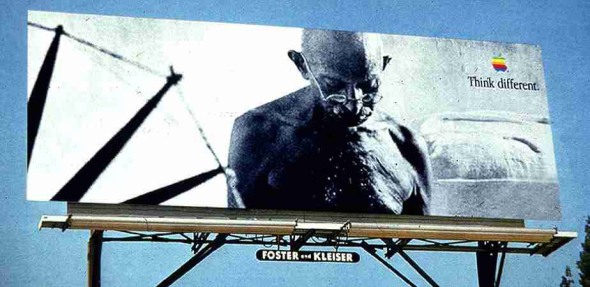
The ‘‘Think Different’’ campaign elicited an outpouring of opinions. Apple’s headquarters was inundated with letters, faxes, phone calls, and E-mails commenting on the campaign. Some questioned the cast of innovative thinkers included in the ads, others were perplexed by the message, and still others were delighted with Apple’s attempt to pay tribute to its heroes. People formed websites spontaneously, discussing who the individuals were, whether the phrase ‘‘Think Different’’ was grammatically correct, and why Apple’s ad campaign would focus on a group of people who for the most part had never touched a computer. Apple and TBWA\Chiat\Day considered the attention paid to the campaign to be a sign of its impact.
At first the advertising industry praised the ‘‘Think Different’’ campaign. The December 15, 1997, edition of USA Today listed Apple’s ‘‘bolder’’ ads as one of the year’s best campaigns. As reported in the same article, ad agency creative directors ranked the campaign as the second best of the year. On May 18, 1998, Advertising Age also voiced its approval: ‘‘The decision to celebrate the kind of independent thinking that has always typified Mac users seems now to make total sense.’’ In fact, the article stated, ‘‘the shots of heroes, geniuses, wildmen, and iconoclasts assembled here makes a strong emotional statement for Apple’s underdog role.’’
Not everyone loved ‘‘Think Different,’’ however. At first Apple had to contend with criticism for launching a ‘‘campaign of dead people.’’ Apple marketing representative Rhona Hamilton spoke of having to educate consumers about what the campaign was attempting to convey. CMP Techwire reported that the company was drawing bad press for undertaking an expensive marketing effort during a period of financial losses. A USA Today Ad Track survey revealed that consumers preferred Intel’s ‘‘Bunny People’’ spots, which were ranked as the most popular technology-industry commercial of 1997.
The campaign had a positive effect on Apple’s bottom line. In April 1998 Apple reported its second straight profitable quarter after nearly two years and $2 billion in losses. Apple attributed the increasing sales to the ‘‘Think Different’’ campaign. ‘‘It let people know that we’re still around and not going anywhere, so that they can feel good about buying the product,’’ said Hamilton. Apple’s market share rose to 4.1 percent. Unfortunately for Apple, the computer maker’s American market share hovered at about 5 percent for the campaign’s final four years. Advertising critics began discrediting ‘‘Think Different’’ for limiting the Apple brand to the small minority of ‘‘revolutionaries’’ that used computers. ‘‘For years, the Apple brand has been associated with artists, writers and designers,’’ Sandra Garcia wrote in the August 2, 2002, issue of Shoot, an ad-industry magazine. ‘‘The so-called ‘creative types’ who seemingly belonged to this secret society of Mac users while the rest of the working public toiled in a clunky PC world.’’
The ads won a slew of awards and developed a cult-following. In 1998 the television spot won the second annual primetime Emmy Award for best commercial from the Academy of Television Arts & Sciences (ATAS). The ad also won a Belding, a Silver Lion and a Gold Lion at Cannes. The long-term campaign won an Effie award for marketing effectiveness. After the first campaign, Apple started sending complimentary posters to public schools across the nation featuring different celebrities (including Pablo Picasso, Jane Goodall, and Ron Howard) to hang in classrooms. The complete packets now sell for hundreds of dollars on some websites.
The campaign ended in 2002.
Advertising Agency: TBWA/CHIAT/DAY, Los Angeles
Chief Creative Officer: Lee Clow
Creative Directors: Ken Segall/Rob Siltanen/Eric Grunbaum/Amy Moorman
Art director: Jennifer Golub/Jessica Schulman/Margaret Midgett,/Ken Younglieb/Bob Kuperman/Yvonne Smith/Susan Alinsangan
Copywriter: Craig Tanimoto
































































